 |
by Melissa Heikkilä on (#6F1ZE)
Getty Images is so confident its new generative AI model is free of copyrighted content that it will cover any potential intellectual-property disputes for its customers. The generative AI system, announced today, was built by Nvidia and is trained solely on images in Getty's image library. It does not include logos or images that have...
|
MIT Technology Review
| Link | https://www.technologyreview.com/ |
| Feed | https://www.technologyreview.com/stories.rss |
| Updated | 2025-12-16 23:18 |
 |
by Rhiannon Williams on (#6F1WB)
This is today's edition ofThe Download,our weekday newsletter that provides a daily dose of what's going on in the world of technology. You can now have a voice conversation with ChatGPT The news: OpenAI has launched two new ways to interact with its flagship large language model in a major update. You can have a...
|
 |
by Will Douglas Heaven on (#6F1WC)
In one of the biggest updates to ChatGPT yet, OpenAI has launched two new ways to interact with its viral app. First, ChatGPT now has a voice. Choose from one of five lifelike synthetic voices and you can have a conversation with the chatbot as if you were making a call, getting responses to your...
|
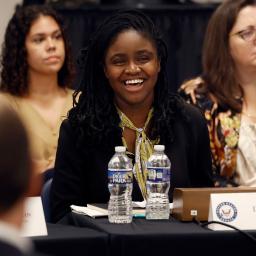 |
by Tate Ryan-Mosley on (#6F1SR)
This article is from The Technocrat, MIT Technology Review's weekly tech policy newsletter about power, politics, and Silicon Valley. To receive it in your inbox every Friday, sign up here. Recently, I wrote a quick guide about what we might expect at Congress's first AI Insight Forum. Well, now that meeting has happened, and we...
|
 |
by Sarah Scoles on (#6F02J)
This article was originally published on Undark. Read the original article. In January 2023, Tara Sweeney's plane landed on Thwaites Glacier, a 74,000-square-mile mass of frozen water in West Antarctica. She arrived with an international research team to study the glacier's geology and ice fabric, and how its ice melt might contribute to sea level...
|
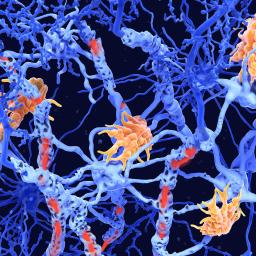 |
by Rhiannon Williams on (#6EZVT)
This is today's edition ofThe Download,our weekday newsletter that provides a daily dose of what's going on in the world of technology. How inverse vaccines might tackle diseases like multiple sclerosis On the whole, typical vaccines prime the immune system to respond. But scientists are also working on inverse vaccines" that teach the immune system...
|
 |
by Cassandra Willyard on (#6EZPF)
This article first appeared inTheCheckup, MIT Technology Review's weekly biotech newsletter. To receive it in your inbox every Thursday, and read articles like this first,sign up here. I've written about vaccines for years, but recently I stumbled across a concept I had never heard of before. Typical vaccines prime the immune system to respond. But...
|
 |
by MIT Technology Review Insights on (#6EZZ3)
Consider a supply chain where delivery vehicles, shipping containers, and individual products are sensor-equipped. Real-time insights enable workers to optimize routes, reduce delays, and efficiently manage inventory. This smart orchestration boosts efficiency, minimizes waste, and lowers costs. Many industries are rapidly integrating sensors, creating vast data streams that can be leveraged to open profound business...
|
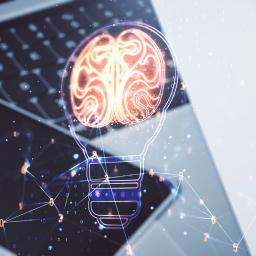 |
by Abhijit Bose on (#6EZ15)
Generative AI, particularly large language models (LLMs), will play a crucial role in the future of customer and employee experiences, software development, and more. Building a solid foundation in machine learning operations (MLOps) will be critical for companies to effectively deploy and scale LLMs, and generative AI capabilities broadly. In this uncharted territory, improper management...
|
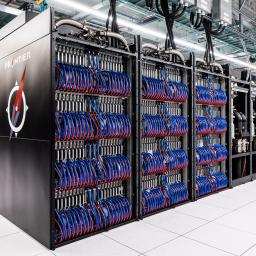 |
by Rhiannon Williams on (#6EYSD)
This is today's edition ofThe Download,our weekday newsletter that provides a daily dose of what's going on in the world of technology. What's next for the world's fastest supercomputers When the Frontier supercomputer came online last year, it marked the dawn of so-called exascale computing, with machines that can execute an exaflop-or a quintillion (1018)...
|
 |
by Casey Crownhart on (#6EYQ3)
This article is from The Spark, MIT Technology Review's weekly climate newsletter. To receive it in your inbox every Wednesday, sign up here. Have you ever repeated a word so many times it started to sound like gibberish? Try saying peanut butter," roughhousing," or warbler" about 50 times, and you'll be wondering whether the words...
|
 |
by Sophia Chen on (#6EYMG)
MIT Technology Review's What's Next series looks across industries, trends, and technologies to give you a first look at the future. You can read the rest of our series here. It can be difficult to wrap your brain around the number-crunching capability of the world's fastest supercomputer. But computer scientist Jack Dongarra, of the University...
|
 |
by MIT Technology Review Insights on (#6EYMH)
We live in a tech-enabled world, but for organizations to advance world-changing innovations, they need skilled people who can build, install, and maintain the systems that underlie them. Finding that talent is one of the biggest ongoing problems - and opportunities - in tech. The IT staffing shortages brought on by covid-19 and the Great...
|
 |
by David Kang on (#6EXVH)
The enthusiasm for AI and its applications is reaching a nadir, according to an August 2023 Gartner Hype Cycle press release, where generative AI is nearly perched atop the category of technologies at their Peak of Inflated Expectations," ready to plunge into the Trough of Disillusionment." A quick look at social media agrees, with some...
|
 |
by MIT Technology Review Insights on (#6EXQC)
Product information is a powerful commodity in today's digital economy. Making it accessible can let consumers know if an item contains allergens, help retailers respond swiftly to product recalls, and enable suppliers to track real-time inventory levels. But data can become siloed and inaccessible if organizations fail to make it easy to connect with. This...
|
 |
by Rhiannon Williams on (#6EXM3)
This is today's edition ofThe Download,our weekday newsletter that provides a daily dose of what's going on in the world of technology. A Disney director tried-and failed-to use an AI Hans Zimmer to create a soundtrack When Gareth Edwards, the director of Rogue One: A Star Wars Story, was thinking about the soundtrack for his...
|
 |
by Zeyi Yang on (#6EXJ9)
This story first appeared in China Report, MIT Technology Review's newsletter about technology developments in China.Sign upto receive it in your inbox every Tuesday. Writing about China, a question I always get is: What technology is ubiquitous there but hasn't caught on in the West? One of my go-to answers is livestream e-commerce. If you...
|
 |
by Antonio Regalado on (#6EWWX)
Google DeepMind says it's trained an artificial intelligence that can predict which DNA variations in our genomes are likely to cause disease-predictions that could speed diagnosis of rare disorders and possibly yield clues for drug development. DeepMind, founded in London and acquired by Google 10 years ago, is known for artificial-intelligence programs that play video...
|
 |
by Melissa Heikkilä on (#6EWN0)
Hans Zimmer, 1; AI, 0. When Gareth Edwards, the director of Rogue One: A Star Wars Story, was thinking about the soundtrack for his upcoming movie about artificial intelligence, The Creator, he decided to try composing it with AI-and got pretty damn good" results. The cheeky part of me thought it'd be even better if...
|
 |
by Rhiannon Williams on (#6EWHY)
This is today's edition ofThe Download,our weekday newsletter that provides a daily dose of what's going on in the world of technology. How AI can help us understand how cells work-and help cure diseases Priscilla Chan and Mark Zuckerberg are cofounders and co-CEOs of the Chan Zuckerberg Initiative. Cells are key to understanding disease-yet so...
|
 |
by Priscilla Chan, Mark Zuckerberg on (#6EWHZ)
As the smallest living units, cells are key to understanding disease-and yet so much about them remains unknown. We do not know, for example, how billions of biomolecules-like DNA, proteins, and lipids-come together to act as one cell. Nor do we know how our many types of cells interact within our bodies. We have limited...
|
 |
by Melissa Heikkilä on (#6EWC2)
This story originally appeared in The Algorithm, our weekly newsletter on AI. To get stories like this in your inbox first, sign up here. So smart! So talented! This week I'm pleased to introduce you to a new crop of bright minds working on some of the most challenging problems in AI and beyond. You...
|
 |
by Zeyi Yang on (#6EWC3)
Scroll through the livestreaming videos at 4 a.m. on Taobao, China's most popular e-commerce platform, and you'll find it weirdly busy. While most people are fast asleep, there are still many diligent streamers presenting products to the cameras and offering discounts in the wee hours. But if you take a closer look, you may notice...
|
 |
by Rhiannon Williams on (#6EVGA)
This is today's edition ofThe Download,our weekday newsletter that provides a daily dose of what's going on in the world of technology. DeepMind's cofounder: Generative AI is just a phase. What's next is interactive AI. DeepMind cofounder Mustafa Suleyman wants to build a chatbot that does a whole lot more than chat. In a recent...
|
 |
by Tate Ryan-Mosley on (#6EVDK)
This article is from The Technocrat, MIT Technology Review's weekly tech policy newsletter about power, politics, and Silicon Valley. To receive it in your inbox every Friday, sign up here. I want to talk about the battle that's raging every day between people who want to censor online content and those who want to protect...
|
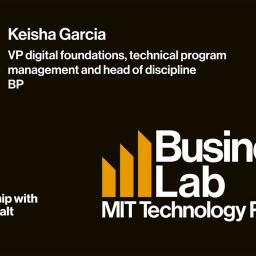 |
by MIT Technology Review Insights on (#6ESS2)
In 2017, BP took on a cloud-first approach that committed to building any new hardware or system builds on the cloud. Just a year prior, only 2% of BP applications lived on the cloud. At the close of 2022, 90% of BP applications had migrated to cloud environments, changing product and service integration and BP's...
|
 |
by Will Douglas Heaven on (#6ESCH)
DeepMind cofounder Mustafa Suleyman wants to build a chatbot that does a whole lot more than chat. In a recent conversation I had with him, he told me that generative AI is just a phase. What's next is interactive AI: bots that can carry out tasks you set for them by calling on other software...
|
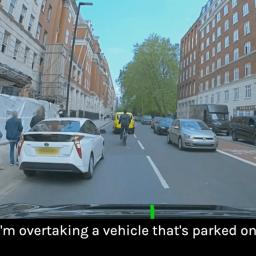 |
by Rhiannon Williams on (#6ESCJ)
This is today's edition ofThe Download,our weekday newsletter that provides a daily dose of what's going on in the world of technology. This driverless car company is using chatbots to make its vehicles smarter The news: Self-driving car startup Wayve can now interrogate its vehicles, asking them questions about their driving decisions-and getting answers back...
|
 |
by Cassandra Willyard on (#6ESA3)
This article first appeared inTheCheckup, MIT Technology Review's weekly biotech newsletter. To receive it in your inbox every Thursday, and read articles like this first,sign up here. I just had a birthday, and you know what that means-I'm newly eligible for a screening colonoscopy. (#milestones!). I've been thinking about cancer screening a lot recently, because...
|
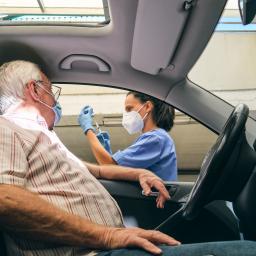 |
by Cassandra Willyard on (#6ERPP)
Covid case numbers have been rising across the United States since mid-July. So the news that updated covid vaccines are finally available comes as a relief to many. The first updated covid-19 shots from Moderna and Pfizer, which target an omicron variant known as XBB, hit some pharmacies as early as yesterday, and many more...
|
 |
by Will Douglas Heaven on (#6ERF6)
Self-driving car startup Wayve can now interrogate its vehicles, asking them questions about their driving decisions-and getting answers back. The idea is to use the same tech behind ChatGPT to help train driverless cars. The company combined its existing self-driving software with a large language model, creating a hybrid model it calls LINGO-1. LINGO-1 synchs...
|
 |
by Rhiannon Williams on (#6ERF7)
AI is getting better at passing tests designed to measure human creativity. In a study published in Scientific Reports today, AI chatbots achieved higher average scores than humans in the Alternate Uses Task, a test commonly used to assess this ability. This study will add fuel to an ongoing debate among AI researchers about what...
|
 |
by MIT Technology Review Insights on (#6ERF8)
Multiple factors are driving organizations to prioritize sustainability. Regulations are requiring organizations to meet emissions disclosure requirements. Investors are increasingly incorporating sustainability into decision-making processes. Consumers are demanding environmentally and ethically sustainable products. Employees, particularly millennials and Generation Z, want to work for organizations whose morals and ethics reflect their own. According to the Deloitte...
|
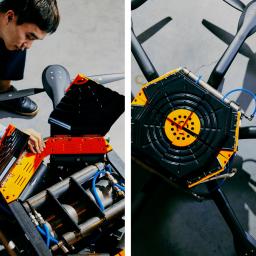 |
by Rhiannon Williams on (#6ER9G)
This is today's edition ofThe Download,our weekday newsletter that provides a daily dose of what's going on in the world of technology. Meet the climate innovators of tomorrow A lot of bright minds are working on solutions to climate change. You can find some of them in the latest edition of our annual 35 Innovators...
|
 |
by Casey Crownhart on (#6ER77)
This article is from The Spark, MIT Technology Review's weekly climate newsletter. To receive it in your inbox every Wednesday, sign up here. A lot of bright minds are working on solutions to climate change. You can find some of them in the latest edition of our annual 35 Innovators Under 35 list. We've highlighted...
|
 |
by Amy Nordrum on (#6EQRE)
MIT Technology Review's 2023 list of 35 Innovators Under 35 is now live. This annual list recognizes young entrepreneurs, researchers, and scientists working in some of the most promising areas of technology today. Explore the list and meet this year's class of innovators, who are working across fields including artificial intelligence, climate and energy, biotechnology,...
|
 |
by MIT Technology Review Insights on (#6EQDT)
For many organizations, innovation is focused on a few strategically prioritized initiatives and often is incremental by design. Change and the surprises it brings can be a grudgingly accepted necessity. Savvy companies, however, acknowledge that innovation must also be part of a firm's strategy and deployed through every department. The value of most companies in...
|
 |
by Rhiannon Williams on (#6EQAC)
This is today's edition ofThe Download,our weekday newsletter that provides a daily dose of what's going on in the world of technology. Google has a new tool to outsmart authoritarian internet censorship The news: Google is launching new anti-censorship technology created in response to actions by Iran's government during the 2022 protests, the company has...
|
 |
by Zeyi Yang on (#6EQ7C)
This story first appeared in China Report, MIT Technology Review's newsletter about technology developments in China.Sign upto receive it in your inbox every Tuesday. When China announced back in July that it was restricting exports of germanium and gallium, it was a reminder of the leverage that China holds in the global supply chain for...
|
 |
by Tate Ryan-Mosley on (#6EQ5D)
Google is launching new anti-censorship technology created in response to actions by Iran's government during the 2022 protests there, hoping that it will increase access for internet users living under authoritarian regimes all over the world. Jigsaw, a unit of Google that operates sort of like an internet freedom think tank and that creates related...
|
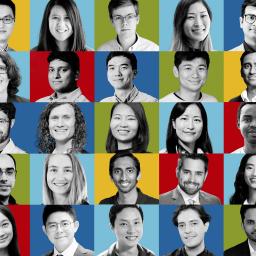 |
by Rhiannon Williams on (#6EP6T)
This is today's edition ofThe Download,our weekday newsletter that provides a daily dose of what's going on in the world of technology. Introducing: Our 35 Innovators Under 35 list for 2023 How do you know what's coming next, especially with a topic as fast-moving as technology? One way is to focus on the technology itself,...
|
 |
by Mat Honan on (#6EP3T)
In his essay introducing this year's class of Innovators Under 35, Andrew Ng argues that AI is a general-purpose technology, much like electricity, that will be built into everything else. Indeed, it's true, and it's already happening. AI is rapidly becoming a tool that powers all sorts of other tools, a technological underpinning for a...
|
 |
by Antonio Regalado on (#6EP3V)
Julia Joung is one of MIT Technology Review's 2023 Innovators Under 35. When an AI beat one of the world's best Go players in 2017, Julia Joung felt relief. She'd spent her childhood in Taiwan mastering the ancient game and once aspired to become a professional player, representing her country. I felt like part of...
|
 |
by Melissa Heikkilä on (#6EP3W)
Sharon Li is MIT Technology Review's 2023 Innovator of the Year. Meet the rest of this year's Innovators Under 35. As we launch AI systems from the lab into the real world, we need to be prepared for these systems to break in surprising and catastrophic ways. It's already happening. Last year, for example, a...
|
 |
by Casey Crownhart on (#6EP3X)
Young Suk Jo is one of MIT Technology Review's 2023 Innovators Under 35. Transportation is one of the world's most polluting industries, accounting for roughly 15% of global greenhouse-gas emissions. Electric vehicles will make a dent in those emissions in the coming decades, but batteries can't hold enough energy to power vehicles used in other...
|
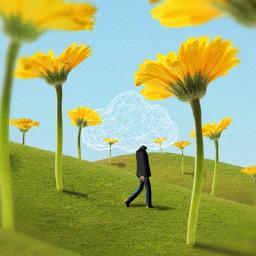 |
by Andrew Ng on (#6EP3Y)
This essay is part of MIT Technology Review's 2023 Innovators Under 35 package.Meet this year's honorees. Innovation is a powerful engine for uplifting society and fueling economic growth. Antibiotics, electric lights, refrigerators, airplanes,smartphones-we have these things because innovators created something that didn't exist before. MIT Technology Review's Innovators Under 35 list celebrates individuals who have...
|
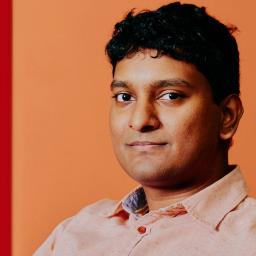 |
by Will Douglas Heaven on (#6EP3Z)
Lerrel Pinto is one of MIT Technology Review's 2023 Innovators Under 35. Asked to explain his work, Lerrel Pinto, 31, likes to shoot back another question: When did you last see a cool robot in your home? The answer typically depends on whether the person asking owns a robot vacuum cleaner: yesterday or never. Pinto's...
|
 |
by Rhiannon Williams on (#6EP40)
Yatish Turakhia is one of MIT Technology Review's 2023 Innovators Under 35. When covid-19 started spreading in early 2020, scientists quickly realized that tracking how the virus was mutating would be essential for public health as new strains emerged that put people at greater risk. Yatish Turakhia, then a postdoc at UC Santa Cruz's Genomics...
|
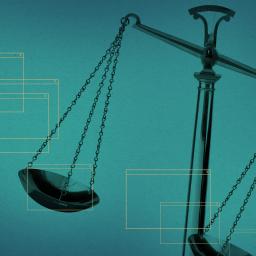 |
by Melissa Heikkilä on (#6EP41)
This story originally appeared in The Algorithm, our weekly newsletter on AI. To get stories like this in your inbox first, sign up here. Before we get started I wanted to flag two great talks this week. On Tuesday, September 12, at 12 p.m. US Eastern time, we will be hosting asubscriber-only roundtableconversation about...
|
 |
by Rhiannon Williams on (#6EN70)
This is today's edition ofThe Download,our weekday newsletter that provides a daily dose of what's going on in the world of technology. What to know about Congress's inaugural AI meeting The US Congress is heading back into session, and they're hitting the ground running on AI. We're going to be hearing a lot about various...
|